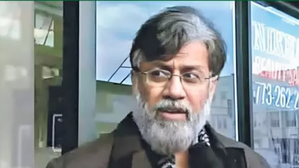Lighter, fast-charging batteries that can power Mars rover developed
A NASA-funded research led by a team of Indian-origin scientists in the US has developed lighter, faster-charging batteries suitable for powering a spacesuit, or even a Mars rover.
Shailendra Chiluwal, Nawraj Sapkota, Apparao M Rao and Ramakrishna Podila, all of whom are part of the Clemson Nanomaterials Institute (CNI) at the Clemson University in South Carolina were part of the team that created these batteries.
Podila, an assistant professor in the College of Science’s department of physics and astronomy, said the revolutionary new batteries could soon be used in US satellites.
Most satellites mainly get their power from the sun. But the satellites have to be able to store energy for when they are in the Earth’s shadow.
“We have to make the batteries as light as possible, because the more the satellite weighs, the more its mission costs,” Podila said.
The research, which was funded by NASA, appeared in the American Chemical Society journal Applied Materials and Interfaces.
Podila said that to understand the group’s breakthroughs, one could visualise the graphite anode in a lithium-ion battery as a deck of cards, wherein each card represents a layer of graphite that is used to store the charge until electricity is needed.
The problem, Podila said, is that “graphite cannot store much charge”.
The team opted to work with silicon, which can pack more charge, meaning more energy can be stored in lighter cells.
Rather than a deck of cards made of graphite, the new batteries uses layers of a carbon nanotube material called “Buckypaper”, with the silicon nanoparticles sandwiched in between.
“The freestanding sheets of carbon nanotubes keep the silicon nanoparticles electrically connected with each other,” explained Shailendra Chiluwal, a graduate student at CNI and the first author on the study.
Using batteries made of silicon and other nanomaterials not only increases capacity, it also allows for charging batteries at a higher current, which translates to faster charging times.
As anyone whose cellphone has ever died in the middle of a phone call knows, this is an important feature for battery technology, the authors said.
Lighter batteries that charge faster and offer greatly increased efficiency will not only be a boon to astronauts wearing battery-powered suits, but also to the scientists and engineers who have to get the astronauts to their destinations.
“Silicon as the anode in a lithium-ion battery represents the ‘holy grail’ for researchers in this field,” said Rao, CNI’s director and the principal investigator on the NASA grant.
Rao added that the new batteries will soon find their way into electric vehicles.
“Our next goal is to collaborate with industrial partners to translate this lab-based technology to the marketplace,” Podila said.













